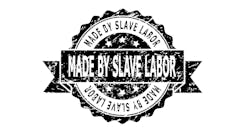In mid-December 2022, the U.S. Department of Labor (DOL) and the Internal Revenue Service (IRS) published an updated Memorandum of Understanding (MOU) for employment tax referrals that arise from investigations of workers’ possible employment misclassifications.
This agreement follows a pattern of similar partnerships entered into by other federal agencies during the Biden Administration that also have been crafted specifically to deal with the classification issue.
“We are determined to identify and resolve labor violations by employers who benefit by misclassifying employees as independent contractors and deprive them of the protections of the labor standards laws we enforce,” said Jessica Looman, principal deputy wage and hour administrator.
In 2011, DOL’s Wage and Hour Division (WHD) and the IRS first entered into a similar MOU to allow both agencies to use their resources to promote employer compliance with obligations to pay employee’ and related employment taxes.
The new MOU explains that the two agencies will establish a methodology for exchanging investigative leads, complaints and referrals of possible violations “to the extent allowable by law and policy.” However, the agencies assert that the terms of the MOU do not provide for any exchange of federal tax information.
The memo explains that the collaboration will enable both agencies to leverage existing resources and promote employer compliance with obligations to properly pay their employees and to pay all applicable employment taxes.
Although concerns over misclassification have been around for decades, the primary target has most often centered around independent contractors, such as trucking owner-operators. Concerns at the state level have included the failure of contractors to pay for workers’ compensation insurance and unemployment taxes. The focus has been expanded in recent years to include all sorts of freelancers and gig workers, such as computer programmers, and also has been a long-term issue for the nation’s labor unions who are prohibited by law from organizing independent contractors.
A new set of criteria that eliminates most of those workers who previously were able to legally claim independent contractor status was enacted in a California law and is being emulated by other states. The California approach also is contained in legislation that was introduced by Democrats in Congress as soon as President Biden was sworn in but has yet to make much headway.
Before the DOL-IRS announcement took place, the most recent similar agreement between federal agencies was forged between the National Labor Relations Board (NLRB) and the Federal Trade Commission (FTC) regarding gig workers. That MOU is aimed at addressing a number of other labor law issues in addition to workers’ misclassification, such as noncompete and nondisclosure provisions that may be included in worker contracts.
The new DOL-IRS agreement states that the “collaboration will enable both agencies to leverage existing resources and promote employer compliance with obligations to properly pay employees and to pay employment taxes. This multi-agency approach presents a united compliance front to employers and their representatives.”
How They Target Employers
A new team consisting of employees selected from the DOL’s WHD and the IRS Small Business/Self Employed Specialty Employment Tax unit (SB/SE) will be named to a team that will plan and manage the process for DOL to refer cases to the IRS for action.
Employers should keep in mind that this fresh inter-agency agreement carries with it the added sting of punishments and costs associated with running afoul of the IRS, which is something that no business owner wants to experience if it can possibly be avoided.
“Businesses should take this coordinated focus on worker classification as an opportunity to assess their workers’ classifications and mitigate the risk of tax penalties resulting from misclassification,” advise attorneys Miguel A. Lopez and William Hays Weissman of the Littler Mendelson law firm.
They add that the MOU makes it clear the IRS will target businesses found to lack what the agency deems to be a good-faith basis for worker misclassification, and which will make them more likely to be on the hook for substantial penalties. For example, the MOU’s description of a decision tree for referrals from DOL’s WHD to the IRS begins with this statement: “At this time, the IRS does not want referrals that do not involve a determination of worker status.”
Further criteria to be used by DOL to decide whether to make a referral to the IRS include establishing that the business is still operating and its annual dollar volume of sales exceeds $500,000. The “annual dollar volume of sales” of a business is defined as the gross receipts from all sales of goods or services by the business (or establishment) during a 12-month period.
Relief for employers that had been granted under the IRS safe harbor provisions regarding misclassification may no longer be available, the IRS said. Employee status will be determined by a standardized referral form and the DOL/IRS “decision tree” series of question referring to the partnership established by the MOU.
These questions are listed in the appendix to the MOU, which also creates a Joint Worker Misclassification Initiative designed to pursue the inquires. Assuming these particular referral criteria are met, the decision tree classifies as a Tier 1 IRS referral and those businesses that would not qualify for protection under Section 530 of the Revenue Act of 1978, according to Lopez and Hays.
Section 530 is a relief provision that terminates a taxpayer’s employment tax liability with respect to an individual not treated as an employee if three statutory requirements are met:
1) reporting consistency;
2) substantive consistency;
3) reasonable basis.
Section 530 does not extend to the worker, who may still be liable for the employee share of employee tax withholding, but not the self-employment tax.
WHD also reminds workers that its website currently offers them access to additional information, including misclassification of independent contractors and a search tool for workers to use if they think they may be owed back wages collected by the division. Workers also can call the division confidentially with questions—regardless of where they are from—and the department can speak with callers in more than 200 languages.




